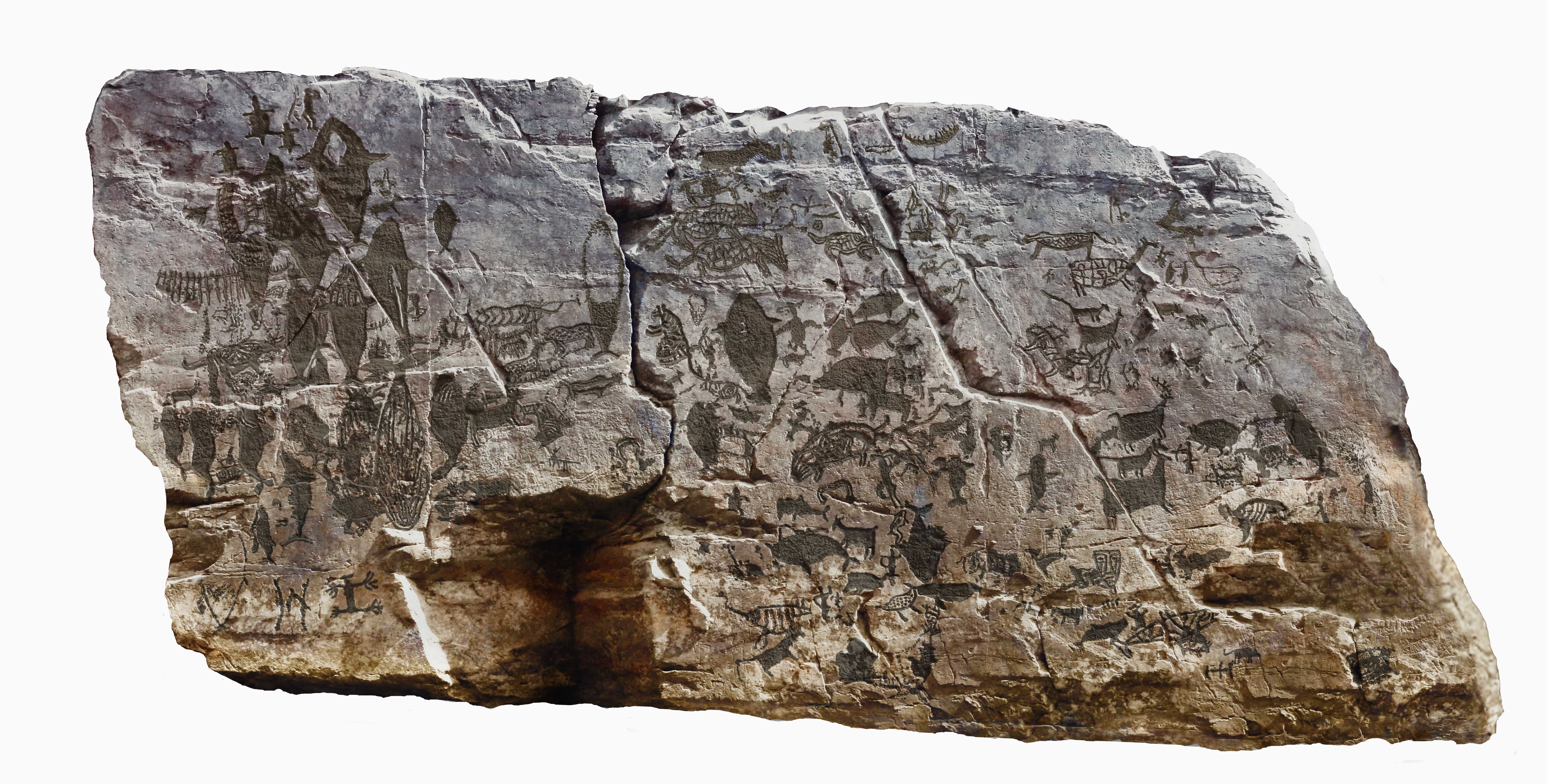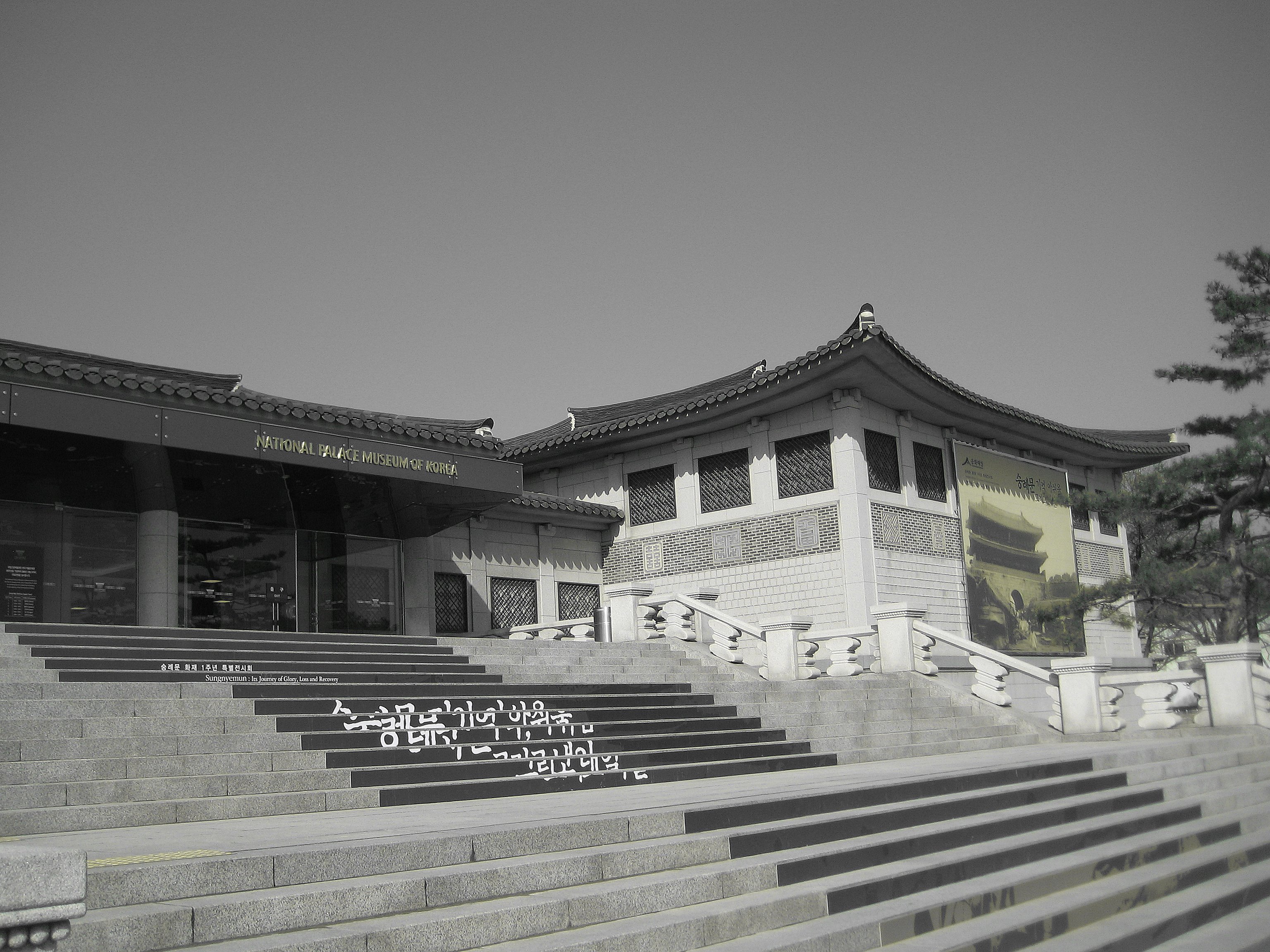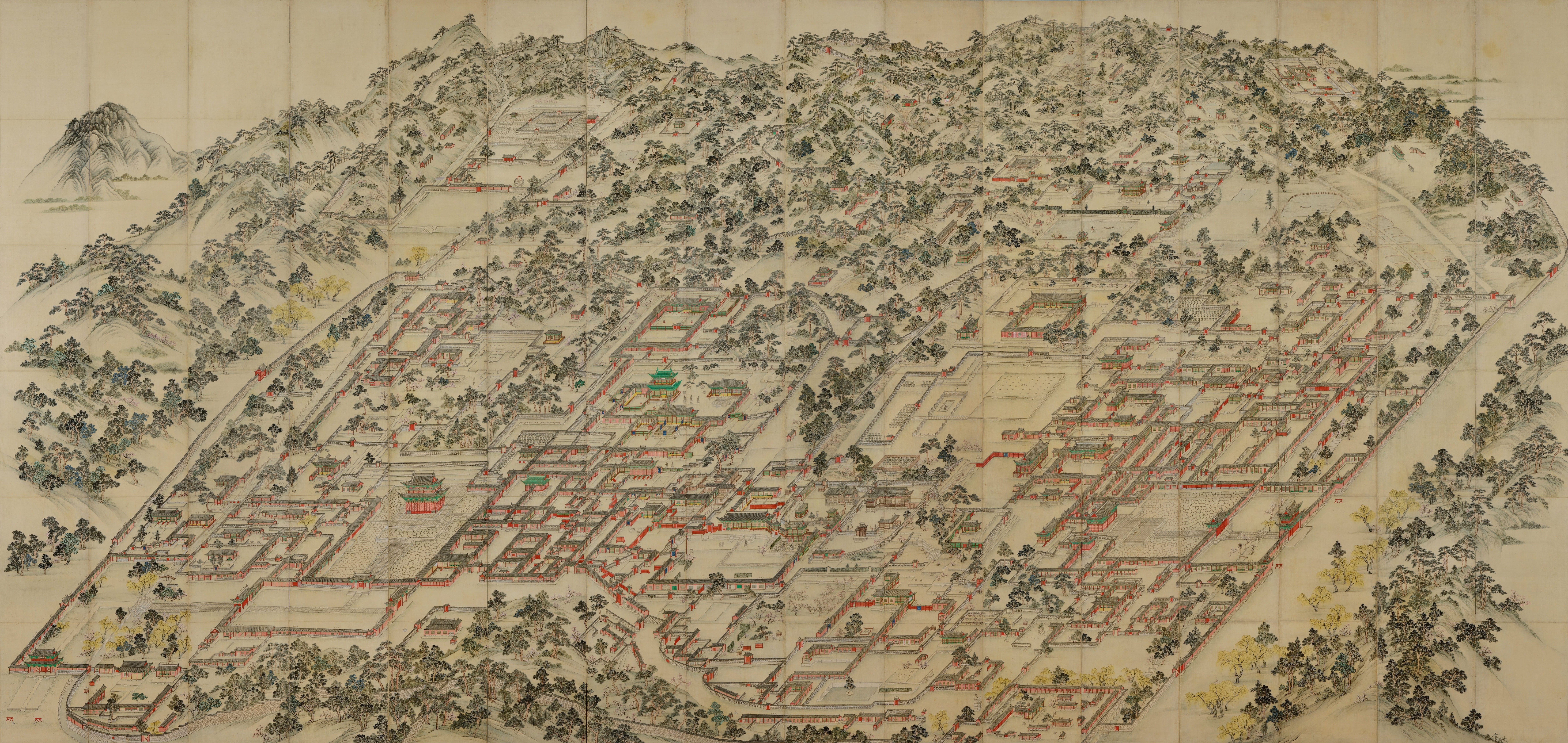|
Cheugugi
Cheugugi (Hangul: 측우기, Hanja: 測雨器) is the first well-known rain gauge invented and used during the Joseon dynasty of Korea. It was invented and supplied to each provincial offices during the King Sejong the Great's reign. As of 2010, only one example of the Cheugugi remains, known as the Geumyeong Cheugugi (Hangul: 금영측우기, Hanja: 錦營測雨器), which literally means "Cheugugi installed on the provincial office's yard." It is designated as National Treasures #561 of Korea and was installed in provincial office of Gongju city, 1837 by King Yeongjo, the 21st king of Joseon.{{Citation needed, date=February 2013 In addition, the official record of the rainfall by Cheugugi from King Jeongjo's reign to Emperor Gojong's reign is preserved. Intention In the early days of the Joseon dynasty, there was a system to measure and report a region's rainfall for the sake of agriculture. However, the method to measure rainfall in those days was primitive, measuring the depth ... [...More Info...] [...Related Items...] OR: [Wikipedia] [Google] [Baidu] |
Rain Gauge
A rain gauge (also known as udometer, pluvia metior, pluviometer, ombrometer, and hyetometer) is an instrument used by meteorologists and hydrologists to gather and measure the amount of liquid precipitation over a predefined area, over a period of time. It is used for determining the depth of precipitation (usually in mm) that occurs over a unit area and thus measuring rainfall amount. History The first known rainfall records were kept by the Ancient Greeks, at around 500 BCE. People living in India began to record rainfall in 400 BCE Ian Strangeways, A History of rain gauges, TerraData, 2010 The readings were correlated against expected growth. In the Arthashastra, used for example in Magadha, precise standards were set as to grain production. Each of the state storehouses were equipped with a rain gauge to classify land for taxation purposes. In 1247, the Song Chinese mathematician and inventor Qin Jiushao invented Tianchi basin rain and snow gauges to reference rain, snowfa ... [...More Info...] [...Related Items...] OR: [Wikipedia] [Google] [Baidu] |
King Sejong The Great
Sejong of Joseon (15 May 1397 – 8 April 1450), personal name Yi Do (Korean: 이도; Hanja: 李祹), widely known as Sejong the Great (Korean: 세종대왕; Hanja: 世宗大王), was the fourth ruler of the Joseon dynasty of Korea. Initially titled Grand Prince Chungnyeong (Korean: 충녕대군; Hanja: 忠寧大君), he was born as the third son of King Taejong and Queen Wongyeong. In 1418, he was designated as heir after his eldest brother, Crown Prince Yi Je, was stripped of his status. Today, King Sejong is regarded as one of the greatest leaders in Korean history. Despite ascending to the throne after his father's voluntary abdication in 1418, Sejong was a mere figurehead while Taejong continued to hold the real power and govern the country up till his death in 1422. Sejong was the sole monarch for the next 28 years, although after 1439 he became increasingly ill, and starting from 1442, his eldest son, Crown Prince Yi Hyang (the future King Munjong), acted as regent. ... [...More Info...] [...Related Items...] OR: [Wikipedia] [Google] [Baidu] |
Jang Yeong-sil Science Garden-Rain Gauges 13-11789 Busan, South Korea 03
Jang may refer to: *Jang (Marshall Islands), part of Maloelap Atoll, in the Marshall Islands *Jang, Nepal, a village development committee in the Rapti Zone of western Nepal * Jang, the Tibetan name for Naxi, a county-level district of Luzhou city, Sichuan Province, China * Jang, the Tibetan name for the Naxi people living in the region of Lijiang, Yunnan *Jang (Korean name), a common Korean family name *Jang Group of Newspapers, a Pakistani newspaper publishing company **'' Daily Jang'', an Urdu-language newspaper published by the Jang Group * Jang Town, a town in Tawang, Arunachal Pradesh, India. *A rank bestowed by the Nizam of Hyderabad to ennobled Muslim retainers - see Khan (title) *A variety of Korean condiments, such as ''ganjang'', ''doenjang'', and gochujang. See also * * Dschang Dschang is a city located in the West (Ouest) Province of Cameroon, with an estimated population of 87,000 (est) in 2001, growing dramatically from 21,705 recorded in 1981. The 2006 Pop ... [...More Info...] [...Related Items...] OR: [Wikipedia] [Google] [Baidu] |
Daegu
Daegu (, , literally 'large hill', 대구광역시), formerly spelled Taegu and officially known as the Daegu Metropolitan City, is a city in South Korea. It is the third-largest urban agglomeration in South Korea after Seoul and Busan; it is the third-largest official metropolitan area in the nation with over 2.5 million residents; and the second-largest city after Busan in the Yeongnam region in southeastern Korean Peninsula. It was overtaken by Incheon in the 2000s, but still it is said to be the third city, according to the "Act on the Establishment of Daegu City and Incheon City" (Act No. 3424 and April 13, 1981). Daegu and surrounding North Gyeongsang Province are often referred to as Daegu-Gyeongbuk, with a total population over 5 million. Daegu is located in south-eastern Korea about from the seacoast, near the Geumho River and its mainstream, Nakdong River in Gyeongsang-do. The Daegu basin is the central plain of the Yeongnam List of regions of Korea, regio ... [...More Info...] [...Related Items...] OR: [Wikipedia] [Google] [Baidu] |
Measuring Instruments
A measuring instrument is a device to measure a physical quantity. In the physical sciences, quality assurance, and engineering, measurement is the activity of obtaining and comparing physical quantities of real-world objects and events. Established standard objects and events are used as units, and the process of measurement gives a number relating the item under study and the referenced unit of measurement. Measuring instruments, and formal test methods which define the instrument's use, are the means by which these relations of numbers are obtained. All measuring instruments are subject to varying degrees of instrument error and measurement uncertainty. These instruments may range from simple objects such as rulers and stopwatches to electron microscopes and particle accelerators. Virtual instrumentation is widely used in the development of modern measuring instruments. Time In the past, a common time measuring instrument was the sundial. Today, the usual measuring instru ... [...More Info...] [...Related Items...] OR: [Wikipedia] [Google] [Baidu] |
Korean Inventions
This is a list of Korean inventions and discoveries; Koreans have made contributions to science and technology from ancient to modern times. In the present, South Korea plays an active role in the ongoing Digital Revolution, with one of the largest electronics industries and most innovative economies in the world. Agriculture * Soybean cultivation : The first unambiguously domesticated, cultigen-sized soybean was discovered in Korea at the Mumun-period Daundong site. * Heated greenhouse : The first description of a heated greenhouse is from the '' Sanga Yorok'', a treatise on husbandry compiled by a royal physician of the Joseon dynasty of Korea during the 1450s, in its chapter on cultivating vegetables during winter. The treatise contains detailed instructions on constructing a greenhouse that is capable of cultivating vegetables, forcing flowers, and ripening fruit within an artificially heated environment, by utilizing ''ondol'', the traditional Korean underfloor heating sys ... [...More Info...] [...Related Items...] OR: [Wikipedia] [Google] [Baidu] |
Gyungbok Palace
Gyeongbokgung (), also known as Gyeongbokgung Palace or Gyeongbok Palace, was the main royal palace of the Joseon dynasty. Built in 1395, it is located in northern Seoul, South Korea. The largest of the ''Five Grand Palaces'' built by the Joseon dynasty, Gyeongbokgung served as the home of Kings of the Joseon dynasty, the Kings' households, as well as the government of Joseon. Gyeongbokgung continued to serve as the main palace of the Joseon dynasty until the premises were destroyed by fire during the Imjin War (1592–1598) and abandoned for two centuries. However, in the 19th century, all of the palace's 7,700 rooms were later restored under the leadership of Prince Regent Heungseon during the reign of King Gojong. Some 500 buildings were restored on a site of over 40 hectares. The architectural principles of ancient Korea were incorporated into the tradition and appearance of the Joseon royal court. In the early 20th century, much of the palace was systematically destroye ... [...More Info...] [...Related Items...] OR: [Wikipedia] [Google] [Baidu] |
Cheonggyecheon
Cheonggyecheon (Hangul: 청계천, ) is a modern public recreation space in downtown Seoul, South Korea. The massive urban renewal project is on the site of a stream that flowed before the rapid post-war economic development caused it to be covered by transportation infrastructure. The $335 million USD project initially attracted much public criticism, however, since its opening in 2005, it has become popular among residents and tourists. Geography Cheonggyecheon is an stream flowing west to east through downtown Seoul, and then meeting Jungnangcheon, which connects to the Han River and empties into the Yellow Sea. During the Park Chung-hee presidency, Cheonggyecheon was covered with concrete for roads. In 1968, an elevated highway was built over it. History The stream was named as ''Gaecheon'' ("open stream") after the first refurbishment project to construct a drainage system during the Joseon Dynasty. The work, which included dredging and bolstering the banks of the ... [...More Info...] [...Related Items...] OR: [Wikipedia] [Google] [Baidu] |
Tongyeong
Tongyeong () is a coastal city in South Gyeongsang Province, South Korea. In 2010, it had an area of and a population of 139,869 people. It is divided into 1 eup (town), 6 myeon (township) and 11 dong (neighborhood). Chungmu city and Tongyeong county were reunited in 1995, creating Tongyeong City as it is known today. It consists of Goseong Peninsula, Hansan Island, , and other islets. It was formerly known as Chungmu, after the posthumous name of Admiral Yi Sun-sin. The name Tongyeong means "command post" and is itself associated with Admiral Yi, as it refers to his principal base that was located on nearby Hansan Island. Famous people Famous people associated with the city include Yi Sun-sin, whose headquarters were located there, and Yun Isang, a noted 20th-century composer. Chungmu Halmae, or "Chungmu Grandmother", is a mythical old woman from Chungmu who gave her name to Chungmu Halmae Kimbap, a common Korean snack food. Chungmu Halmae, though mythical, is one of the most r ... [...More Info...] [...Related Items...] OR: [Wikipedia] [Google] [Baidu] |
National Palace Museum Of Korea
The National Palace Museum of Korea is a national museum of South Korea located in Gyeongbokgung Palace, Seoul. History The museum first began as the "Korean Imperial Museum", which was established in September 1908 and was originally located in Changgyeonggung Palace. On November of the following year, the museum was opened to the public. However, in April 1938, the ruling Japanese government renamed the museum to the "Museum of Yi dynasty". In March 1946, after the liberation of Korea, it was renamed "Deoksugung Museum". In 1991, Cultural Heritage Administration instituted the museum in Seokjojeon (석조전, Stone Hall) of Deoksugung Palace, and in 2005, the museum was relocated to a modern building inside Gyeongbokgung Palace. Collection National Palace Museum of Korea houses over 40,000 artifacts and royal treasures, from the palaces of the Joseon Dynasty and the Korean Empire, of which 14 are National Treasures of South Korea. It displays records, state rites, architect ... [...More Info...] [...Related Items...] OR: [Wikipedia] [Google] [Baidu] |
Changdeokgung
Changdeokgung (Hangul: 창덕궁, Hanja: 昌德宮; literally, "The Palace of Prospering Virtue"), also known as Changdeokgung Palace or Changdeok Palace, is set within a large park in Jongno District, Seoul, South Korea. It is one of the "Five Grand Palaces" built by the kings of the Joseon dynasty (1392–1897). As it is located east of Gyeongbok Palace, Changdeokgung—along with Changgyeonggung—is also referred to as the "East Palace" (동궐, 東闕, ''Donggwol''). Changdeokgung was the most favored palace of many Joseon kings and retained many elements dating from the Three Kingdoms of Korea period that were not incorporated in the more contemporary Gyeongbokgung. One such element is the fact that the buildings of Changdeokgung blend with the natural topography of the site instead of imposing themselves upon it. Like the other Five Grand Palaces in Seoul, it was heavily damaged during the Japanese occupation of Korea (1910–1945). Currently, only about 30% of the pre-Japa ... [...More Info...] [...Related Items...] OR: [Wikipedia] [Google] [Baidu] |
Munjong Of Joseon
Munjong of Joseon (15 November 1414 – 10 June 1452), personal name Yi Hyang (Korean language, Korean: 이향; Hanja: 李珦), was the fifth ruler of the Joseon, Joseon dynasty of Korea. As the eldest son of Sejong the Great, King Sejong the Great and Queen Soheon, he succeeded to the throne in 1450. Biography Yi Hyang was the longest serving heir apparent during the Joseon, Joseon dynasty, holding the position for a record 29 years. In January 1421, Sejong instructed that his eight-year-old son be educated by scholars from the Hall of Worthies, then in October the same year, he was invested as crown prince and sent to study at the Sungkyunkwan. From 1442 until his own ascension to the throne in 1450, Yi Hyang served as regent and took care of state affairs during the final years of his father's reign, as Sejong the Great, Sejong developed various illnesses and disorders. Most of his achievements were during his time as crown prince. Although credit is primarily given to ... [...More Info...] [...Related Items...] OR: [Wikipedia] [Google] [Baidu] |








